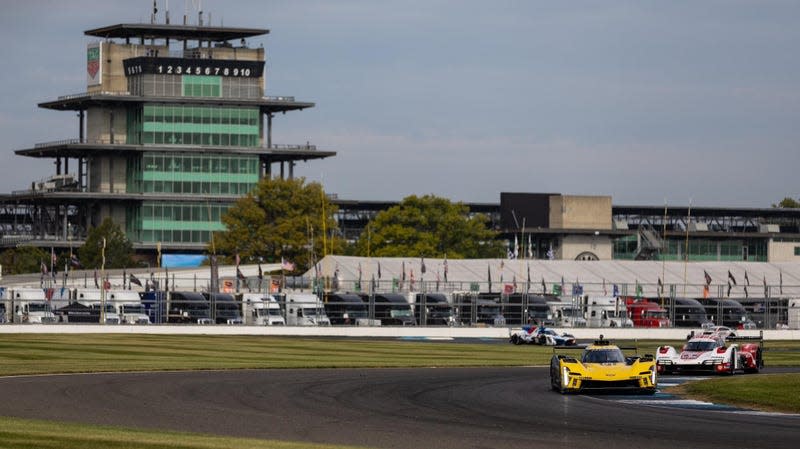American Racing Fans Don't Deserve To Have It This Good

Enthusiasm for motorsport is on the rise. The on-track action is as exciting as it has ever been, with international participation from major sports car and luxury manufacturers drawing tons of eyeballs. Long-term sustainability for the sport and tons of new fans joining in makes everything better for lifetime fans like you and I. Every race seems to end in a knock-down-drag-out fight to the flag—except F1, which is exciting for other reasons—and turning casual fans into lifers. The best time to get into racing was when you were a kid, but the second best time is right freakin’ now.
The 2008 financial crisis seemed to take the wind out of racing’s sails a bit, and series have been walking a tightrope since then to mixed results. But recent trends indicate most series are seeing bigger grids, better competition, and some seriously packed grandstands at these races. More cars on track and simplified rulebooks tends to mean closer racing, which draws more fans to the track and to watch on TV. The community itself is growing, meaning more eyeballs, meaning more sponsors, meaning more new teams. It’s a growth spiral that doesn’t show any signs of ending any time soon.
Read more
Will Smith's Reaction to Jada Pinkett's Shocking Revelations ...Will Surprise You
Iranian director Dariush Mehrjui and his wife found murdered in their home
Chris Rock Has Something to Say About Jada Pinkett Smith's Recent Comments about Him
Saturday Night Live season 49 premiere: Pete Davidson returns with the same old jokes
IMSA is closing in on its sixth year of a six year television deal with NBC. Every year of that deal has seen increased viewership across terrestrial broadcast television channels and streaming service Peacock. This year’s Daytona 24—the debut race for the new GTP class, featuring competition from Cadillac, Acura, BMW, and Porsche—saw double-digit growth in viewership, peaking at 1.2 million sets of eyeballs.
America’s top open-wheel series, IndyCar, saw its most-watched season in over a decade, also on NBC platforms. The 17-race season saw viewership increase by two percent across the board, with 1.32 million people watching an average race. The Indy 500, across NBC and Peacock, was seen by just shy of five million people, the most viewers for that race since 2008. Likely by no sheer coincidence, that race saw the fastest speeds in Indy history, and some of the closest competition ever. It didn’t hurt that Alex Palou, Scott Dixon, and Josef Newgarden delivered serious quality racing, and there was always a question as to who would win, despite 15 of 17 races being won by Chip Ganassi Racing or Team Penske drivers.
It goes without saying that Formula One is blowing up in the U.S. as it has been since 2020 and the advent of Drive To Survive. In 2022 the series enjoyed an average of one million American viewers on ABC and ESPN (a contract which runs through 2025.) Despite the fact that the Miami track kind of sucks, and the Las Vegas race goes green at damn midnight local time, the fact that we have three Grands Prix in the U.S. for the first time ever is not lost on me.
This is truly a great time to be a motorsport enthusiast in the U.S. There’s just so much good racing going on, and there are so many great ways to watch it. I recommend attending a few in person if you can, because there’s nothing quite like seeing the mega hybrid prototypes of IMSA or the insane speeds of IndyCar, or the spectacle that is Formula One. If you’re not already a fan, give it a shot. You might like what you see.
More from Jalopnik
Starfield Planet Schrodinger III Is The XP Farm You’ve Been Dreaming Of
Disney says it got permission to reuse old Genie dialogue for new animated anniversary short
‘Instant Evolution': AI Creates a Squishy Purple Blob That Uses Air to Walk
Sign up for Jalopnik's Newsletter. For the latest news, Facebook, Twitter and Instagram.

 Yahoo Autos
Yahoo Autos 